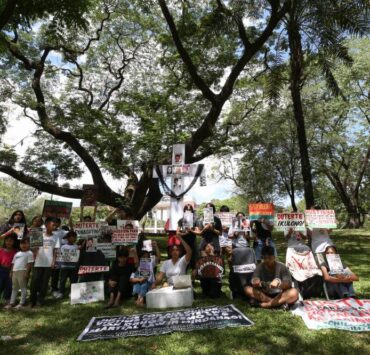‘Dangerous’ heat index in 29 areas, says Pagasa

While actual temperatures remained in the usual range for this time of year, the Philippine Atmospheric, Geophysical and Astronomical Services Administration (Pagasa) warned of “dangerous” heat index levels in 29 areas across the country.
The apparent heat, as measured by Pagasa’s heat index, was so bad that at least six people were hospitalized in Iloilo City due to heat-related illnesses, with three of them later dying due to complications.
Iloilo City recorded its highest heat index this year on April 16 at 47 degrees Celsius, coinciding with four cases of heat stroke on that day.
Additional cases were logged on April 19 (two cases at 44 C), April 20 (one case at 40 C), and April 21 (one case at 39 C).
As of Saturday, Iloilo province remained among the areas that are expected to experience dangerous heat index levels.
Other danger areas are in the provinces of Pangasinan, La Union, Ilocos Norte, Cagayan, Isabela, Zambales, Tarlac, Aurora, Laguna, Batangas, Quezon, Palawan, Albay, Camarines Sur, Camarines Norte, Masbate, Capiz and Northern Samar.
Pagasa measures the heat index, or the apparent heat humans feel, through data on air temperature and relative humidity as well as an instrument called a wet bulb temperature meter.
The weather bureau reiterated its warning for the public to be cautious against dehydration and exposing themselves to the heat.
Below average rain
Pagasa also warned that most of the country, except Mindanao, may experience warm weather for longer period this year because forecasters expect a “below average” number of typhoons in 2025.
In Mindanao, an intertropical convergence zone was observed off Mindanao and is expected to bring cloudy skies and some rain showers, but no cyclones are expected yet.
On April 4, the weather bureau said La Niña conditions—or observed patterns of increased rainfall—were no longer present in the central and equatorial Pacific.
The weather conditions raised concerns in Metro Manila and surrounding areas over the water supply, citing the hot season situation in Luzon last year.
But on Saturday, the elevation of Angat dam, Metro Manila’s main water source, remained above 200 meters above sea level (masl), unlike last year when it dropped to below 180 masl.
Angat Dam’s level was at 204.50 masl from the 214.18 masl on Feb. 27, according to the data of the Bulacan Provincial Disaster Risk Reduction Management Office.
Angat Dam, located in Norzagaray town, impounds water from Angat River and forms part of the Angat-Ipo-La Mesa water system that supplies 97 percent of raw water requirements for Metro Manila. —WITH A REPORT FROM RUCHELLE DENICE DEMAISIP





















